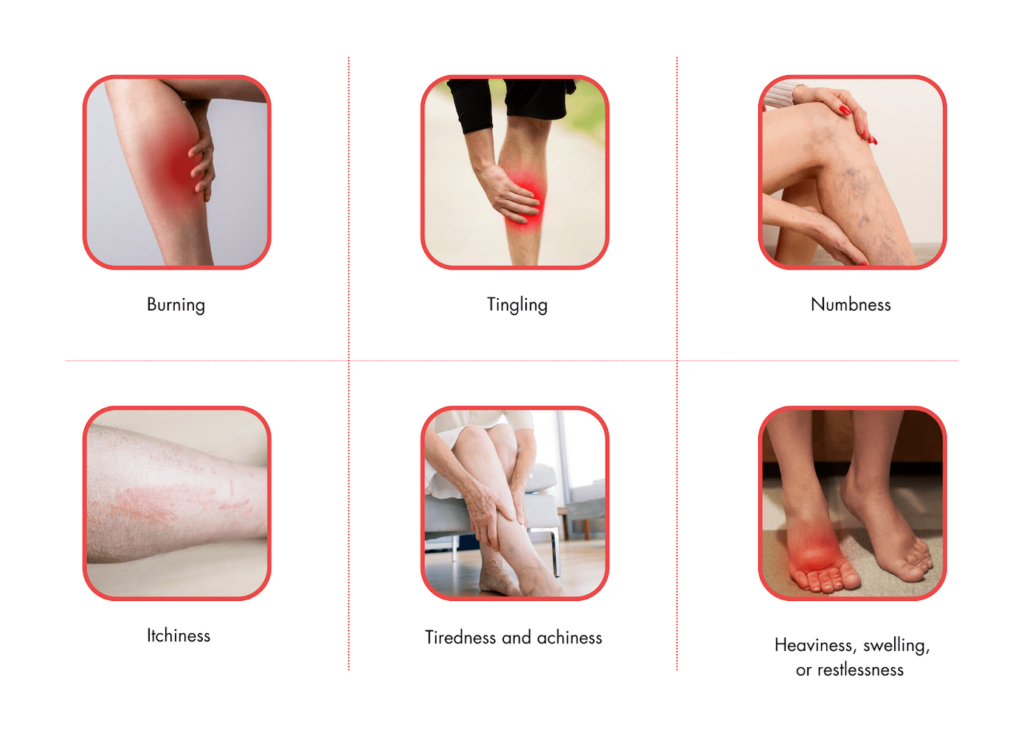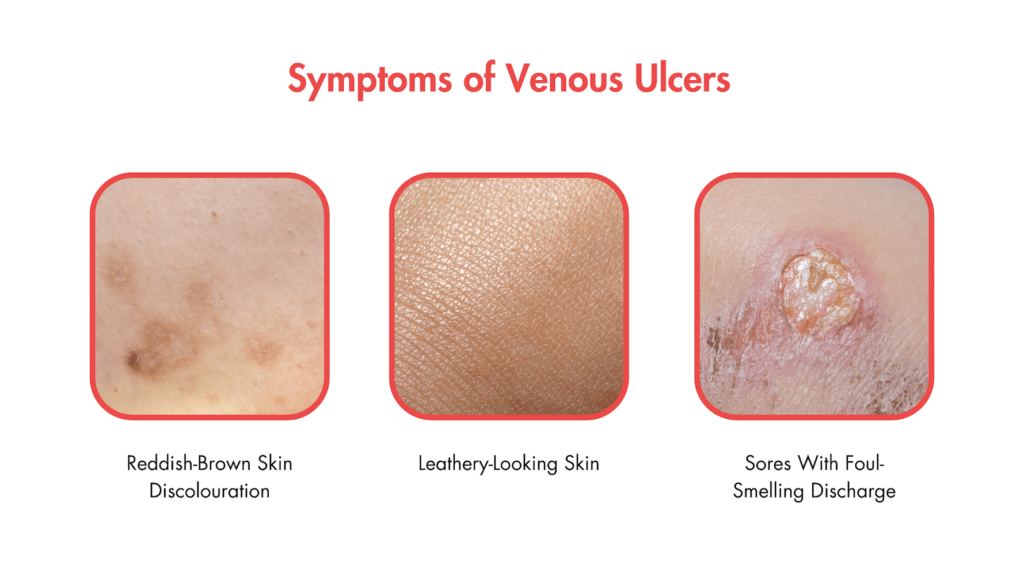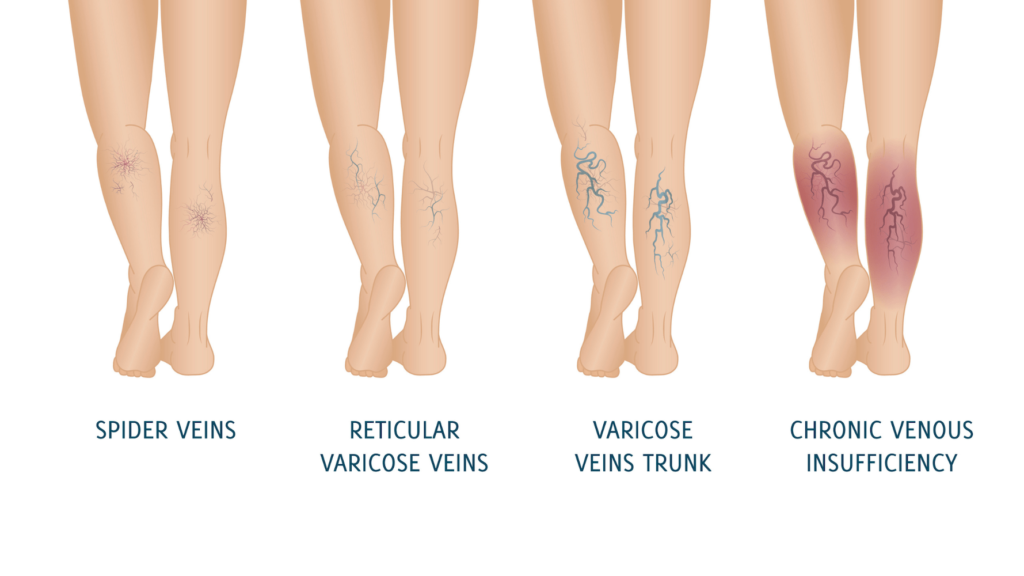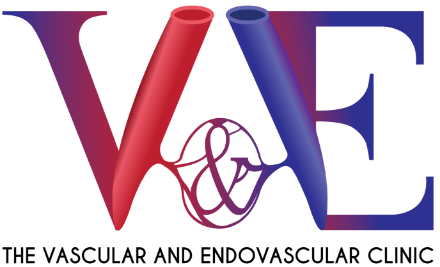Chronic Venous Insufficiency (CVI) progresses through various stages, significantly impacting patients’ quality of life. Understanding Chronic Venous Insufficiency symptoms at every stage is crucial to seeking appropriate medical attention for effective management.
The late recognition of CVI symptoms leads to severe complications such as venous ulcers and deep vein thrombosis. As a result, our vascular surgeons, Dr Tang and Dr Wong, emphasise the importance of early detection and interventions. Learn more in this article.
What Are Chronic Venous Insufficiency Symptoms at Every Stage
Chronic Venous Insufficiency (CVI) is categorised into six stages, where each progression follows predictable patterns with specific signs and symptoms.
The first stage, which is more common in women, is spider veins. It involves small, thin blood vessels near the skin’s surface.
The second stage, called varicose or ropey veins, presents with more prominent veins. This stage is when individuals become aware of the disease.
Chronic Venous Insufficiency Symptoms in the second stage usually occur in the legs, including sensations such as.

It is recommended to seek treatment when these symptoms begin to appear.
The third stage involves oedema or swelling without any changes in the skin. As the disease progresses, leg swelling occurs due to backflow in the venous system.
During the fourth stage, the skin starts to change colour due to the continued progression of the disease. It may become thinner and discoloured, appearing reddish brown or whitish. At this late progression of the disease, the skin gets easily injured and takes longer to heal.
Stage five involves skin changes with healed ulceration, while stage six involves skin changes with active ulceration. These stages are the most advanced forms of superficial vein diseases. The venous ulcers present in these stages are caused by improper functioning of venous valves, disrupting blood flow.
These venous ulcers become chronic and extremely painful if left untreated.

At the Vascular & Endovascular Clinic, Dr Tang and Dr Wong offer the full spectrum of treatment options for vein disease, including the cosmetic aspect. They provide customised treatment plans based on individual needs, whether dealing with varicose veins, spider veins, or advanced stages of vein disease.
Who Are at Risk of Chronic Venous Insufficiency
Chronic Venous Insufficiency (CVI) affect individuals from various backgrounds and lifestyles. While it can occur in anyone, certain factors increase the risk of developing this condition in the following groups.
Chronic Venous Insufficiency Causes
- Age – The veins’ valves, responsible for maintaining proper blood flow, weaken over time, leading to the development of CVI.
- Gender – Women are more prone to CVI than men due to hormonal changes involving pregnancy and menopause.
- Family History – A family history of venous insufficiency predisposes individuals to CVI.
- Obesity – Excess weight places additional pressure on the veins in the lower extremities.
- Prolonged Sitting or Standing – Jobs or lifestyles that involve sitting or standing hinder proper blood circulation.
- Previous Leg Trauma – Injuries or surgeries involving the legs damage veins and increase susceptibility to CVI.
Chronic Venous Insufficiency Stages: The Vascular and Endovascular Services For Chronic Venous Insufficiency

Our vascular specialists manage CVI symptoms tailored to the specific stage of the disease. This includes treatments available for CVI, emphasising their relevance at crucial stages of the condition.
Chronic Venous Insufficiency Tests For Diagnosis
Effective CVI management requires accurate diagnosis. Our specialists employ diagnostic tools to assess the extent of venous insufficiency.
- Doppler Ultrasound is a non-invasive test that uses sound waves to evaluate blood flow in the veins, detecting areas of insufficiency.
- Venography involves injecting a contrast dye into the veins to provide a clear image of vein health and identify blockages or reflux.
Chronic Venous Insufficiency Treatment
Proper Conservative Management For Early Stages
- Compression Therapy improves blood flow in the legs and reduces symptoms like swelling and discomfort.
- Elevating the legs above heart level to alleviate swelling and discomfort.
- Regular exercise enhances muscle tone and promotes better blood circulation.
Minimally Invasive Procedures For Late Stages
- Endovenous Laser Ablation (EVLA) uses laser energy to close off faulty veins, redirecting blood flow to healthier ones.
- Radiofrequency Ablation (RFA) employs radiofrequency energy to close off problematic veins.
Surgical Interventions For Severe Stages
- Vein Stripping involves removing damaged veins through small incisions.
- Ambulatory Phlebectomy for surgical removal of smaller varicose veins.
- Deep Vein Valve Repair or replace damaged valves in deep veins to restore proper blood flow.
The severity of symptoms of various chronic venous insufficiency stages requires tailored interventions. Our specialists provide targeted treatments to alleviate symptoms and improve vein function. We employ a patient-centric approach, ensuring individuals receive quality and comprehensive care for their conditions.
Both medical and cosmetic treatments are available, allowing individuals to choose the option that suits them. Cosmetic treatments improve the appearance of veins and boost confidence. Individuals can schedule a consultation with The VEC to learn more about vein disease treatment options.
Your Next Steps for Better Vein Health Begins Here
Veins are responsible for returning oxygen-depleted blood to the heart. When veins become compromised, as in the case of CVI, the veins’ walls and valves weaken, disrupting normal blood flow. This leads to severe complications, such as deep vein thrombosis and venous ulcers.
For instance, in the initial stages, patients may experience swelling or aching legs. As CVI progresses, more severe symptoms such as skin changes or venous ulcers impact individuals’ quality of life.
Our patient-centred care revolves around your specific needs. We develop personalised treatment plans tailored to your particular CVI stage and overall health.
Partner with our dedicated vascular surgeons today.









